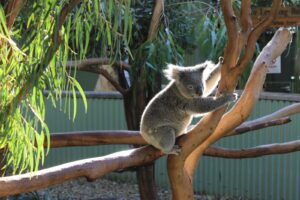Bears are known for their adorable looks and playful behaviours. While they are cute, bears are also wild animals and great predators, and they must be considered as such.
While bears are often considered solitary creatures, this isn’t entirely true. In certain areas, they can coexist with other animals and be found close to human settlements.
Bears have specific behaviours, vocal communication systems, and very characteristic body language that allows understanding if they feel threatened, relaxed, or in searching mode.
Understanding these behaviours is vital to avoid critical situations when cohabitation with humans may become an issue.
Using all the possible precautions and implementing strategies to prevent conflicts and help with their conservation and protection is integral to understanding these remarkable animals.
Key Takeaways:
- While cute and playful, bears are wild animals and should be treated cautiously and respectfully.
- Understanding bear behaviours, vocal communication, and body language is crucial for cohabitation and safety.
- Bears’ reactions to humans vary based on species, context, and past experiences, emphasizing the need for caution and distance.
- Domesticating bears is impractical and unsafe due to their wild nature, complex needs, and potential risks to human and bear safety.
- American black bears are considered the friendliest bear species, but they still require respect and caution.
- Guidelines for safe interactions with bears include never feeding them, understanding bear behaviour, and respecting their natural habitats.
- Conservation efforts, education, and responsible behaviour are crucial for ensuring the coexistence and survival of bears and humans.
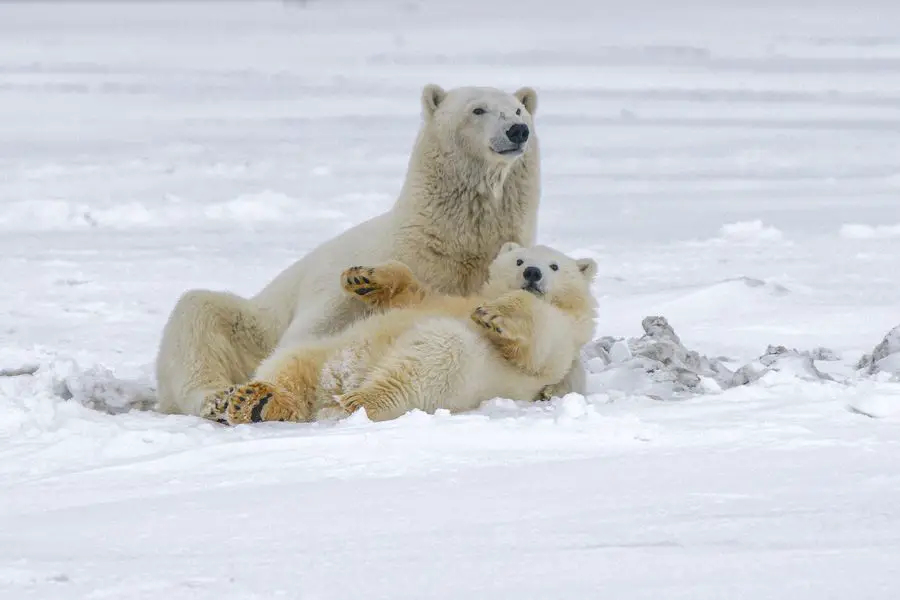
Giant Panda and Polar Bears
Unfortunately, in nature, many bears are now endangered, with rapid urbanization and climate change affecting their natural habitats.
The giant panda is an iconic animal that exemplifies the impact of habitat loss and poaching. While conservation efforts have helped to increase their population, they continue to face ongoing threats from deforestation and human development. Unfortunately, only about 1,800 giant pandas are left in the wild due to these threats.
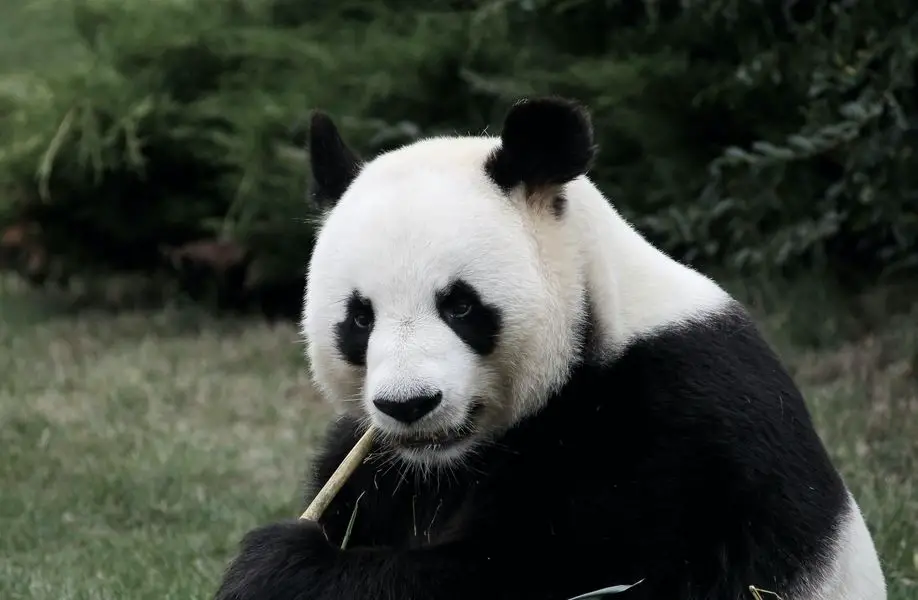
Another bear that faces extinction is the polar bear. These magnificent creatures live in some of the harshest environments on Earth – near the North Pole – where they rely on sea ice to hunt for food, and climate change endangers their existence.
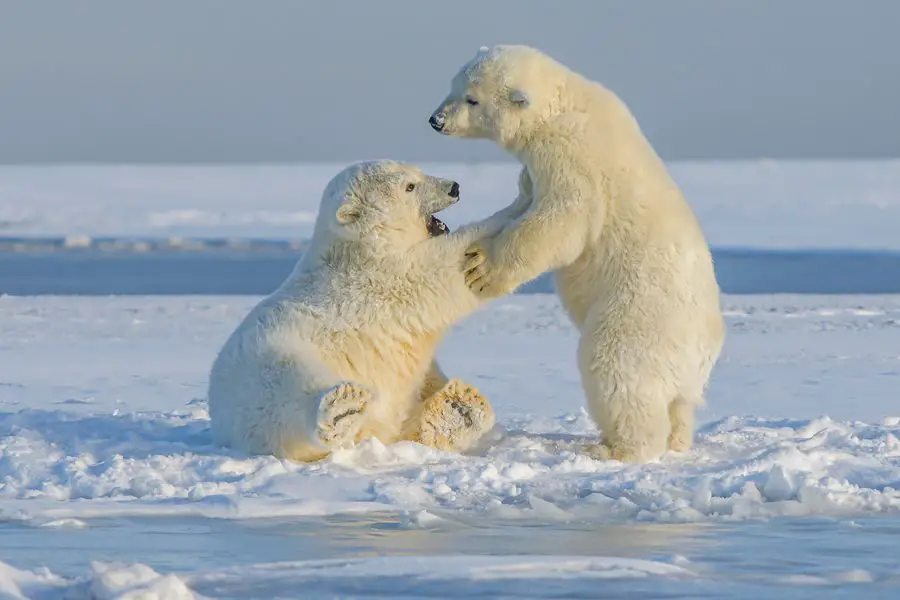
Loveable but Potentially Dangerous
Bears are cute animals with big eyes, a cuddly aspect, and funny movements (we have all seen them standing up and waving); female bears are often spotted with mischievous, fluffy, cute cubs. Whether a grizzly bear roaming through the woods or a polar bear frolicking in the snow, they are always a captivating view.
Bears are strong, big animals with big personalities that match their physical size. They are known for their fierce protectiveness of their young ones and can be dangerous if they feel threatened. Their curious nature often leads them to roam in areas with people, which makes encountering them not so unusual.
Remember, like many other animals, bears have the so-called flight or fight response, meaning they can become aggressive if you enter their space.
Why are Bears Cute?
Bears have been portrayed in various ways, from ancient cave paintings to modern-day cartoons. However, one thing that stands out is how often they are depicted as cute and cuddly.
But why is this the case?
One possible explanation is that humans have a natural affinity towards animals with certain physical features. These characteristics are often associated with babies and infants, which triggers our innate nurturing instincts. Bears possess many of these features, which makes them appealing to us.
Another reason could be the influence of media and pop culture on our perceptions of bears. Over the years, bears have been portrayed in movies and TV shows as lovable, friendly, and harmless characters.
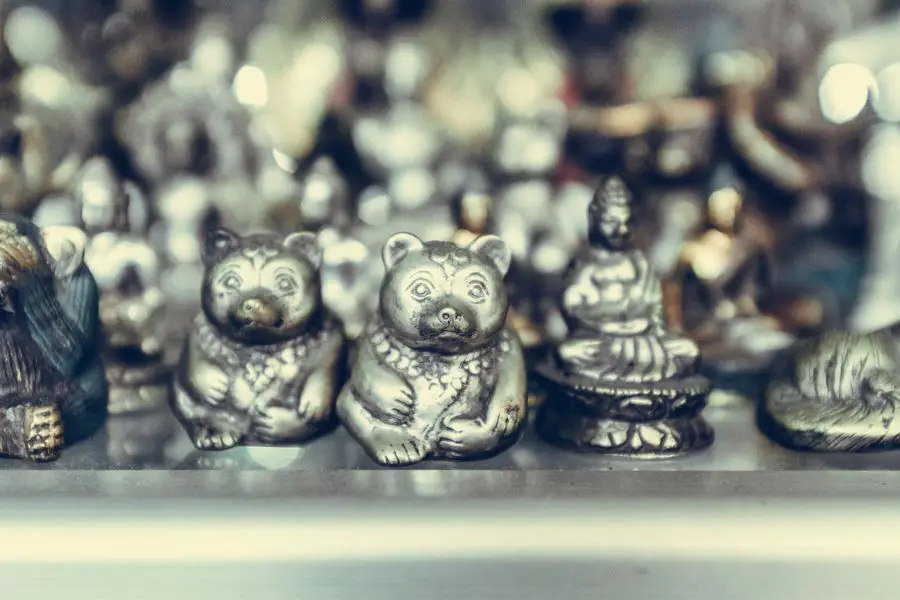
The Cultural Image of Bears
Bears have been part of human culture for thousands of years. From cave paintings to modern art, bears have been depicted in various ways throughout history. In many cultures, bears are seen as powerful animals; in others, they are associated with fear and danger.
In ancient times, bears were often worshipped as deities or revered creatures. The Ainu people of Japan believed that bears were gods who could communicate with humans and would hold elaborate ceremonies to honour them.
Similarly, the Native American tribes saw the bear as a symbol of strength and courage and incorporated it into their mythology as the symbol of rebirth.
In literature and popular culture, bears have been featured prominently in stories such as Goldilocks and the Three Bears or Winnie-the-Pooh. They are also commonly used in advertising campaigns to sell products such as honey or teddy bears.
How do Bears React to Human Presence?
How bears react to humans depends on various factors, such as the species, the age and sex of the bear, and the context of the encounter (for example, if the bear is a mother with her cubs). For example, black bears are more timid and may run away if they sense humans nearby. Grizzly bears, on the other hand, maybe more aggressive if they feel threatened or if they are protecting their cubs.
Encounters with these wild animals can vary greatly, depending on numerous factors, including the bear’s past experiences with humans and the context of the encounter. Typically, bears show natural curiosity, but this can swiftly turn to defensive behaviour if they feel threatened or are with their cubs.
While often driven by curiosity, human interactions with bears require a careful approach to prevent conflicts and guarantee mutual safety.
Feeding bears, intentionally or accidentally, can lead to habituation. It can reduce a bear’s natural wariness of humans, potentially leading to more frequent and bold interactions that can be dangerous for both parties. Such habituated bears may approach humans expecting food, thereby escalating the chances of conflict and unfortunate outcomes, including the possible removal of the bear by wildlife authorities.
Are Bears Affectionate to Humans?

While bears may exhibit certain behaviours that can be interpreted as friendly, it is essential to remember that they are ultimately wild animals with typical wild animal behaviour.
Feeding or interacting with bears can be dangerous and lead to habituation and potentially dangerous situations.
Do Bears Attack Humans?
While bears are generally known to be non-aggressive towards humans, attacks still do occur. Understanding how and why these attacks happen is crucial for anyone planning on spending time in areas where bears live.
Bears typically attack humans when they feel threatened or provoked. It can happen if someone accidentally comes between a mother bear and her cubs or surprises a bear while hiking through its territory.
Bears may also attack humans if they feel their food source is threatened or depleted. However, it’s important to note that most bear encounters end without incident, and many attacks can be prevented by following basic safety and behaviour protocols.
Understanding and respecting bear behaviour is important to minimize negative interactions. Good practices include observing from a safe distance and securing food sources in bear-inhabited areas. Educating oneself about bear behaviour, particularly their signs of discomfort or stress, such as huffing, jaw-popping, or ear-laying, is necessary for a respectful coexistence and ensures the safety of both humans and bears.
Can You Domesticate a Bear?
No, humans cannot domesticate bears. However, there are examples of bears that have a bond with humans.
Bears are wild animals with instincts honed over thousands of years of evolution. Domestication is a process that takes generations of selective breeding and cannot be achieved with a single animal.
It’s important to remember that bears are not pets and should never be treated as such. They require specific environments, diets, and space to roam freely. However, while domesticating a bear may not be possible, humans can bond with them in certain circumstances.
Interactions between bears and humans have been documented in various contexts, such as wildlife rehabilitation centres or controlled research environments. In these settings, bears may learn to associate humans with positive experiences, such as food provision or gentle handling, potentially leading to trustful behaviours. However, these interactions require strict protocols to safeguard the safety and well-being of both parties. It is essential to maintain a respectful distance and always prioritize the natural behaviours and habitat needs of bears.
Exploring the possibility of domesticating bears reveals that their inherent wildness and complex needs render this idea both impractical and unsafe. Bears are naturally equipped with instincts suited for survival in the wild, not for living near humans. Their significant size and strength, which enable them to thrive in rugged environments, can become hazardous in a domestic setting, posing severe risks to human safety.
Moreover, bears display complex social behaviours and require extensive space to explore and forage, which are difficult to replicate in a domestic environment. Bears’ specific dietary needs, which in the wild include a variety of plants, insects, and occasionally larger prey, are difficult to provide in captivity without adequate specialized knowledge and resources.
Attempting to domesticate such powerful and instinct-driven creatures can lead to significant stress for the animals and potential danger for humans. Ultimately, the welfare of bears and humans is best served by respecting these animals as wild creatures and preserving their natural habitats.
What Is the Friendliest Bear?
Bears, in general, are not known for being amiable animals. However, one type of bear stands out as the friendliest of them all: the American black bear.
The American black bear is found throughout North America and is known for its calm and gentle nature. Unlike other bears, they are not aggressive toward humans unless seriously provoked or threatened. They are more likely to run away than attack when confronted by a person.
Another reason why American black bears are considered to be the friendliest bears is their diet. They have a varied diet consisting primarily of plants and berries, including insects, fish, and small mammals. This means that they do not need to hunt large prey like grizzly bears or polar bears do, which can make them less aggressive overall.
Are Bear Cubs Friendly?
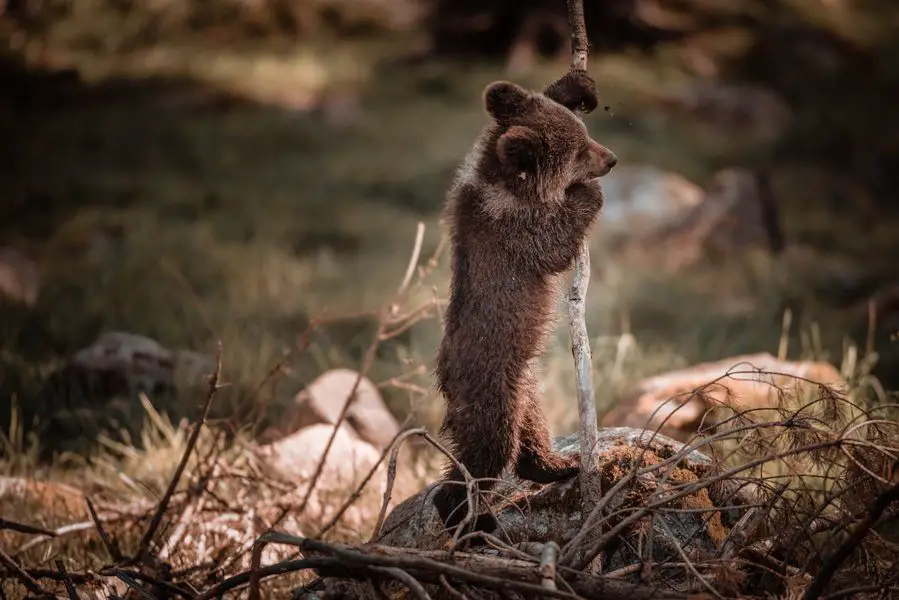
Although bear cubs may seem adorable and fun, it is crucial to remember that they are still wild creatures. Despite their curious and amiable demeanour, they are not domesticated animals and should not be treated like pets. Similar to adult bears, bear cubs possess unpredictable instincts and behaviours that can be hazardous. Acknowledging their wild nature and maintaining a safe distance to guarantee the safety of both humans and bears is crucial.
Guidelines for Safe Interactions with Bear
Given bears’ unpredictable nature, it is vital to adhere to specific guidelines to guarantee safe interactions with these wild animals.
While bears are fascinating creatures, their behaviour is primarily dictated by instincts, which can lead to unforeseen reactions when they come into close contact with humans. Maintaining a respectful distance is imperative to prevent habituation and ensure both human and bear safety.
Firstly, never attempt to feed bears or leave food accessible to them. These precautions discourage them from associating humans with food sources, a critical factor in preventing habituation. Educating oneself on bear behaviour is also essential; understanding warning signs and typical responses helps avoid encroachments into their space that could trigger defensive behaviour.
Moreover, it is important to respect their natural habitats. Encroachment can stress wildlife, leading to aggressive encounters. Stay on marked trails and store food securely while in bear territories. Using bear-proof containers and disposing of all waste properly helps keep wild areas safe for both humans and bears.
Conclusions
While bears capture our hearts with their adorable appearance and fascinating behaviours, it’s crucial to remember that they are wild animals deserving of respect and caution.
Understanding their behaviours, habitat needs, and potential dangers is vital for safe coexistence.
Conservation efforts are imperative, especially for endangered species like the giant panda and polar bear, whose survival is threatened by human activities and climate change.
By respecting their wild nature, implementing safety protocols, and preserving their natural habitats, we can ensure the continued existence of these magnificent creatures for generations to come.

